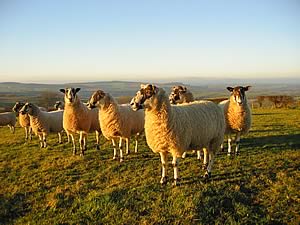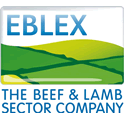|
18/02/06
Cutting lamb losses from birth to sale by just two percentage
points in the coming season offers English flocks the opportunity
to boost returns by about £1/ewe or more than £7
million nationally, according to the latest English Beef and
Lamb Executive (EBLEX) calculations.
The calculations highlight that reducing lowland flock losses
from a current average of 10% to an achievable target of 8% and
hill and upland flock losses by a similar proportion will allow
two extra lambs to be reared for every 100 ewes, increasing returns
by almost exactly £1/ewe at 2005 prices.
The fact that most flocks should be able to do this at little
or no extra cost, means the increased returns will feed straight
through to margins, making a very positive contribution to improving
overall profitability.
To make the most of this opportunity, EBLEX recommends:
- Scanning ewes to identify twin and triplet-bearing ewes both
for preferential feeding in the run-up to lambing and as an
aid to rapid fostering.
- Meeting the rapid increase in ewe energy and protein requirements
in the final eight weeks of pregnancy through careful nutritional
management.
- Giving ewes booster vaccinations 4-6 weeks before lambing
as part of a clear health plan, that includes risk assessments
for pneumonia, coccidiosis, nematodirus, worms, clostridial
diseases and orf.
- Preparing for lambing with well-organised equipment and colostrum
supplies, sufficient labour (one person per 250 ewes indoors
or 350-600 ewes outdoors), enough indoor lambing pens (one
per 8-10 ewes) and a hospital area for problem ewes and lambs.
- Keeping all lambing equipment as clean as possible, washing
hands and wearing disposable gloves to assist ewes; bedding
lambing areas well and disinfecting them between ewes; and
treating lamb navels with a strong alcohol-based iodine solution.
- Ensure every lamb receives sufficient colostrum in the first
4-6 hours of life for its nutritional and laxative as well
as passive immunity value.
- Fostering lambs as soon after birth as possible to increase
the chances of success.
- Leaving lambs until they are at least 24 hours old, wherever
possible, before castration and tailing to
avoid compromising their colostrums intake.
- Giving ewes and lambs sufficient time for mothering-up in
small groups (10-15 ewes) and, where lambing outdoors, leaving
them undisturbed in the birth area for a while and only moving
them carefully to enable critical ewe-lamb bonds to be fully-established.
- Making mothering ability a key selection criterion in breeding
flock replacements, using EBVs to identify superior stock when
purchasing rams for replacement breeding.
Further information and guidance on improving flock returns
by reducing lamb losses is available to levy payers through the
EBLEX Lamb Action for Profit resource at www.eblex.org.uk.
 Sheep Market Prospects Improve for 2006 Season Sheep Market Prospects Improve for 2006 Season
 Delight For Dutch At European Fine Food Fair Delight For Dutch At European Fine Food Fair
 Flocks Must Abide by New Identification Rules Flocks Must Abide by New Identification Rules
|



